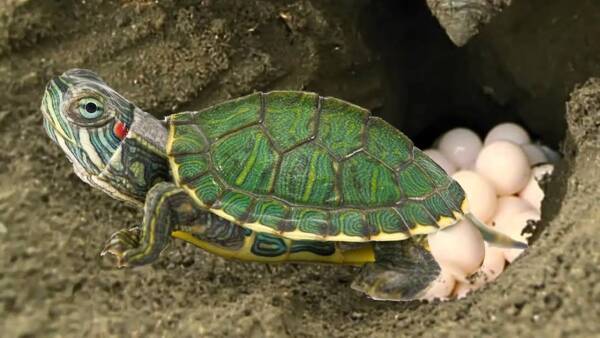Turtles are reptiles and they need the right environmental conditions to lay their eggs safely. The following is the general process and key points of turtle laying eggs:

1. Choose the right place: Turtles need a suitable place to lay their eggs, usually a warm, quiet, sandy or earthy place. In captivity, turtles can be provided with enough sand or soil for them to dig and lay their eggs.
2. Provide adequate burrowing materials: In order to lay eggs, a turtle needs to dig a proper burrow. Make sure to provide your turtle with enough loose soil or sand to facilitate digging and burrowing.
3. Provide appropriate temperature and humidity: Turtles need certain temperature and humidity conditions to lay eggs. Turtles will only choose a location to lay their eggs if the environment is kept warm and the humidity is appropriate.
4. Observe the behavior of the turtle: When preparing to lay eggs, the turtle will show some characteristic behaviors, such as patrolling, digging, lying on its side, etc. If you observe a turtle exhibiting these behaviors, it may mean that it is preparing to lay eggs.
5. Provide concealment and protection: In order for your turtle to feel safe, it is important to provide appropriate concealment and protection. Fences or shelters can be placed around areas where turtles may choose to lay their eggs to protect their privacy and safety.
Note that a turtle's reproductive behavior is affected by factors such as its species, age, and season. If you plan to breed a turtle, it is recommended to learn more about the breeding habits of your specific turtle species and provide appropriate housing and conditions. If necessary, it is best to seek guidance and advice from a veterinarian or professional with relevant experience.
animal tags:
We created this article in conjunction with AI technology, then made sure it was fact-checked and edited by a Animals Top editor.